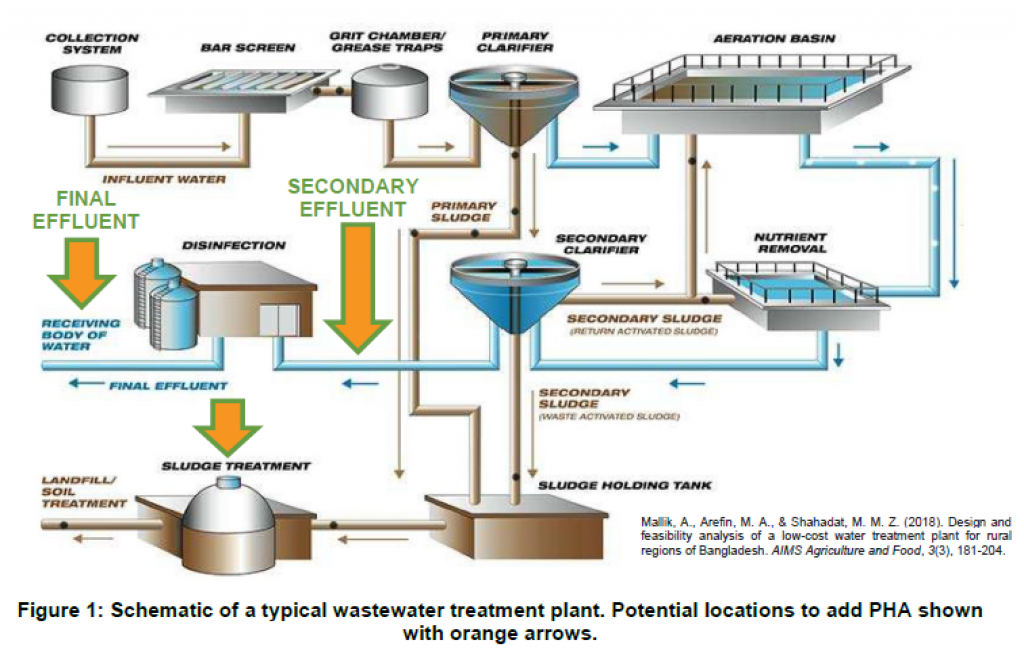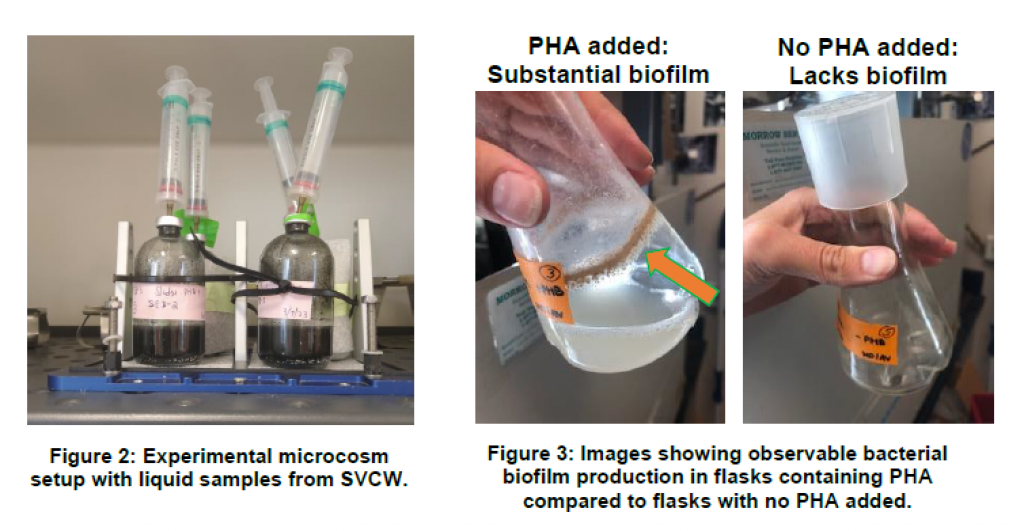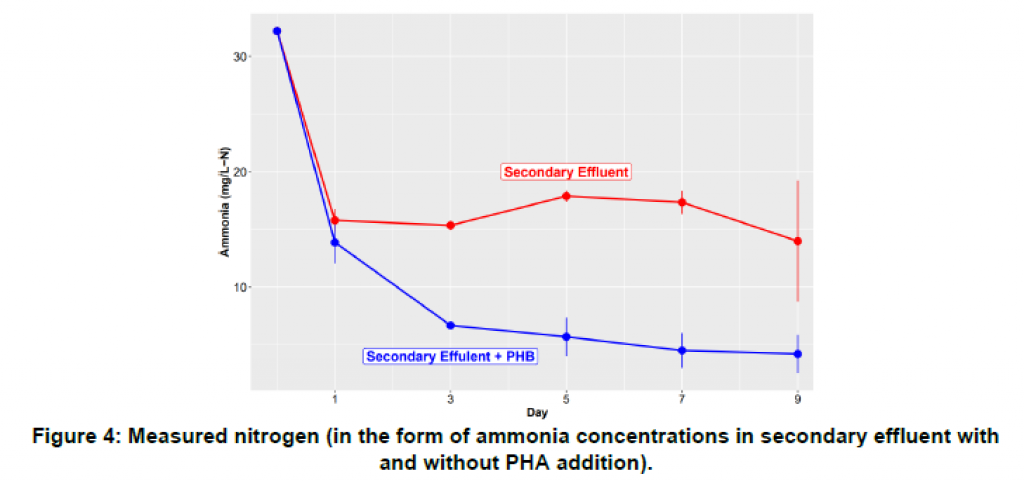With funding from Schmidt Marine Technology Partners, a program of the Schmidt Family Foundation, Mango Materials has developed an innovative biopolymer-based solution to reduce excess nitrogen in aquatic systems. Although living organisms require nitrogen to survive, excess nitrogen can cause algal blooms, eutrophication, and other problems in aquatic ecosystems. We demonstrated that the biopolymer polyhydroxyalkanoate (PHA) can measurably reduce detrimental levels of nitrogen in aquatic ecosystems in numerous ways: 1) accelerating the removal of nitrogen by serving as a carbon source for microbes that remove nitrogen pollution; and 2) promoting biofilm growth that can aid in increasing overall biomass.
Our study focused on whether PHA could be added to a standard wastewater treatment process to increase nitrogen removal. We obtained water samples from Silicon Valley Clean Water (SVCW), a wastewater treatment plant located in Redwood City, CA. Because standard wastewater treatment comprises several stages for physical and biological removal of pollutants, we obtained samples from different steps in the treatment process (Figure 1).

Experimental microcosm systems with and without added PHA powder were set up using anaerobic sludge and secondary wastewater effluent (Figure 2). After they were incubated, we monitored their ammonium concentrations. In microcosm flasks with added PHA, substantial biofilm formation was visible on the sides of the flasks near the liquid-air interface (Figure 3). Biofilm formation was not observed in flasks without PHA added. One plausible explanation for this finding is that bacterial biofilm growth is stimulated when PHA is available as a carbon source.

In secondary effluent, the presence of PHA significantly reduced ammonium concentrations after three days of incubation; secondary effluent microcosms with PHA added had concentrations of ammonia that were 53% lower than secondary effluent microcosms without PHA added (Figure 4). Initially, we had predicted that “seeding” the system with bacteria that had been previously exposed to PHA (i.e., inoculation) might be needed to help accelerate nitrogen removal, however, we found that microbes capable of PHA-accelerated nitrogen removal were already present in the secondary effluent, making seeding unnecessary.

Based on these results and discussions with wastewater treatment plant operators, our findings suggest that secondary effluent is an ideal location for adding PHA as a treatment to reduce nitrogen. Deploying PHA in secondary effluent would be simple due to the modular holding tank infrastructure allowing for varying retention times. Additionally, a richer microbial community is likely present in secondary effluent compared with the final effluent (which is disinfected by chlorination), which could increase the diversity of bacteria that use PHA for nitrogen removal. Results of this study showed that it is possible to use PHA in a wastewater system to reduce ammonia, and that secondary effluent treatment tanks are a promising location to incorporate PHA nitrogen removal technology.
To gain a deeper understanding of the potential PHA demand for nitrogen removal, we conducted market research in areas including wastewater treatment, aquaculture, and golf course management. In wastewater treatment, while regulations vary regionally, there is deep concern that future regulations may limit nitrogen content of wastewater effluent. In an uncertain regulatory environment, we found that wastewater plant operators preferred a recurring expense, such as the recurring purchase of PHA granules, compared to large capital investment in new nitrogen removal infrastructure.
Contact with managers at top golf courses throughout the U.S. revealed information about nitrogen removal efforts within their ponds and lagoons. One golf course operator shared that they have neither a budget for nitrogen removal nor a removal system, but they use “the absolute minimum of any turf maintenance application possible.” The vastly different climates in regions across the U.S. influence the approaches taken locally regarding maintenance of ponds: some places use chemicals to prevent algae growth, whereas others take a more integrated management approach, such as using fish. Although nitrogen pollution was cited as a concern, systems for nitrogen removal in ponds were not always present. Based on the interest shown in an environmentally friendly solution, we believe the opportunity exists for a non-invasive, non-toxic, PHA-based solution.

